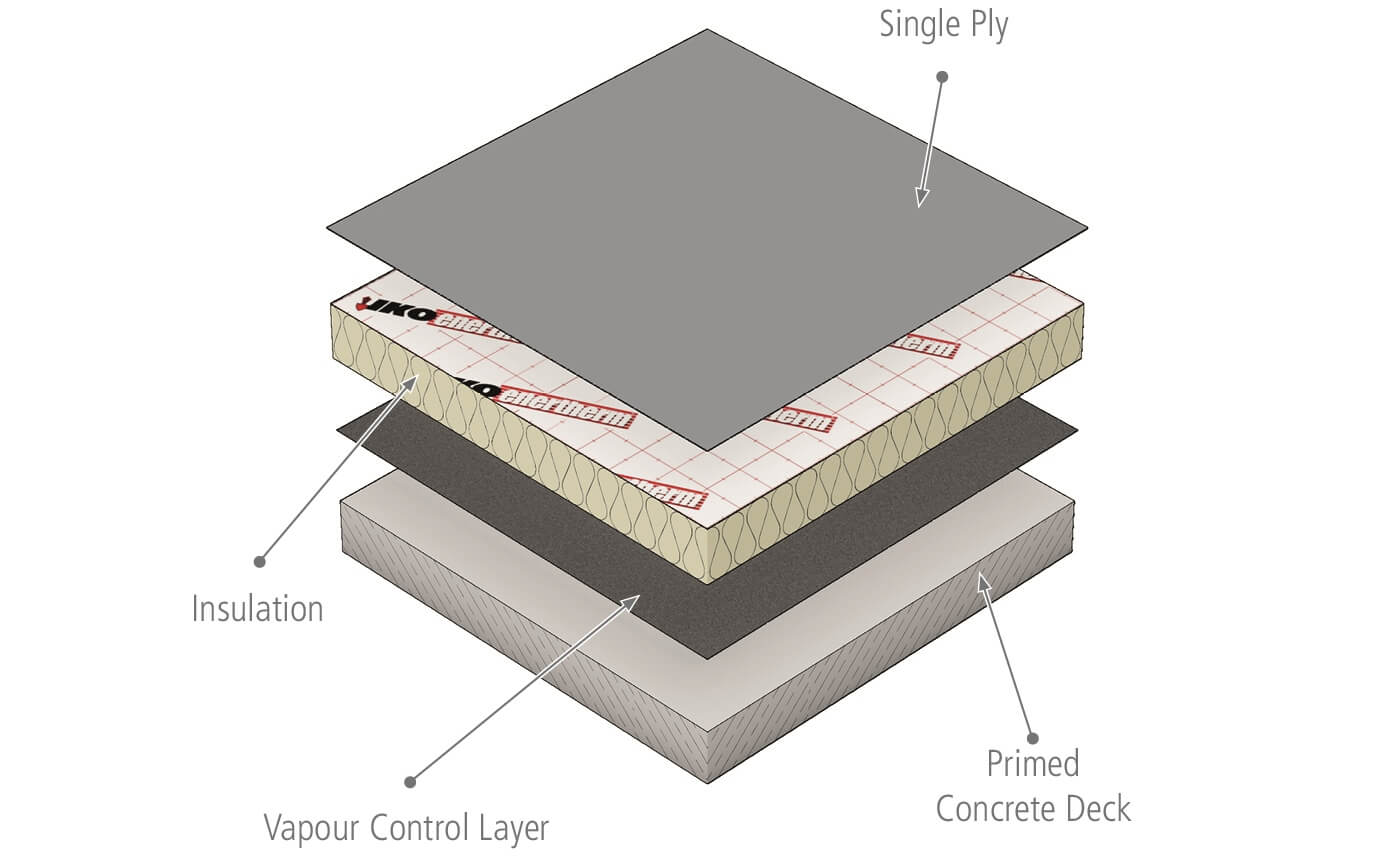Flat Warm Roof Build Up

Flat roof constructions are generally classed as either cold or warm.
Flat warm roof build up. Thermoplastic or elastomeric are the most effective and should extend up adjacent walls at least 150mm from the roof surface. A great and strong roof ensures no trouble during rain and strong winds for the residents. A great home requires a great roof. A good roof requires maintenance like any.
When building a flat roof it is vital that a degree of falls is built into the construction to ensure rainwater run off. In a warm roof the thermal insulation is immediately below the membrane finish the structural deck any voids and the ceiling are at a temperature close to that of the building s interior condensation control is achieved by using a vapour control layer vcl on the warm side of the insulation. The major difference between the warm flat roof and the cold flat roof has to do with the air flow between the roofing timbers known as joists that help to hold up the roof. Where insulation above the roof void allows the air underneath to stay warm avoiding condensation but also allows for an air flow should one be deemed to be required through the joists.
Flat roofs have a reputation of failing early but improvements in strength flexibility ageing and weather resistance mean that if built with care using the correct materials today s high performance felts can have a life span of up to 20 years. There are three recognised designs of flat roof construction. In the warm flat roof construction there is insulation packed into every possible space where air can flow. Warm flat roof fully packed with insulation to prevent any condensation build up.
Warm roof build ups can be installed on most modern construction material types such as concrete timber and timber based sheets. The definition of a flat roof according to bs 6229 is having a pitch less than 10 o to the horizontal however some in the industry would consider up to 15 o as their definition of a flat roof. Or else on the interior of the building just. A roof is mainly considered to keep out rain and snow from a building.
A thermal layer of fibreglass polystyrene or other insulating material should be inserted either above the roof decking the warm roof model which is suitable for homes or permanent residences. It can also prevent pest from entering. Warm cold and inverted. In a warm roof construction the principal thermal insulation layer is located above the structural decking resulting in the structural deck and support structure being at a temperature close to that of the interior of the building.














































